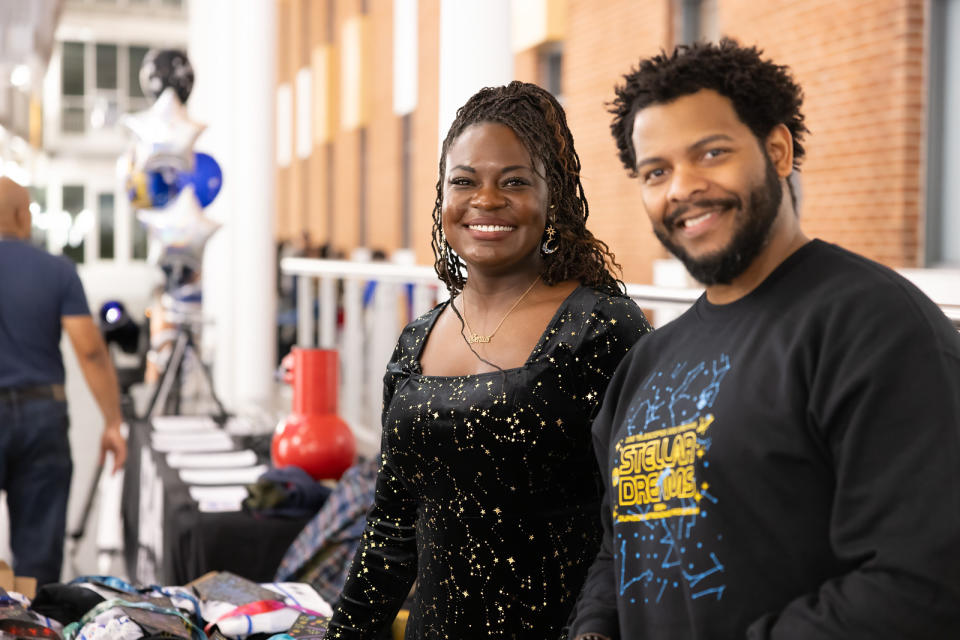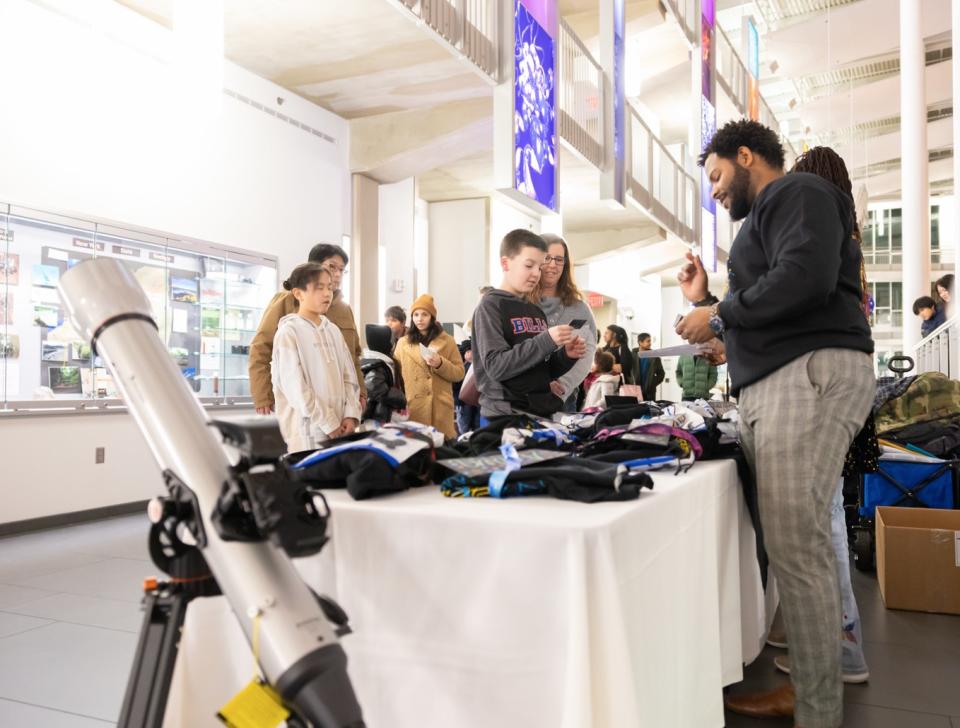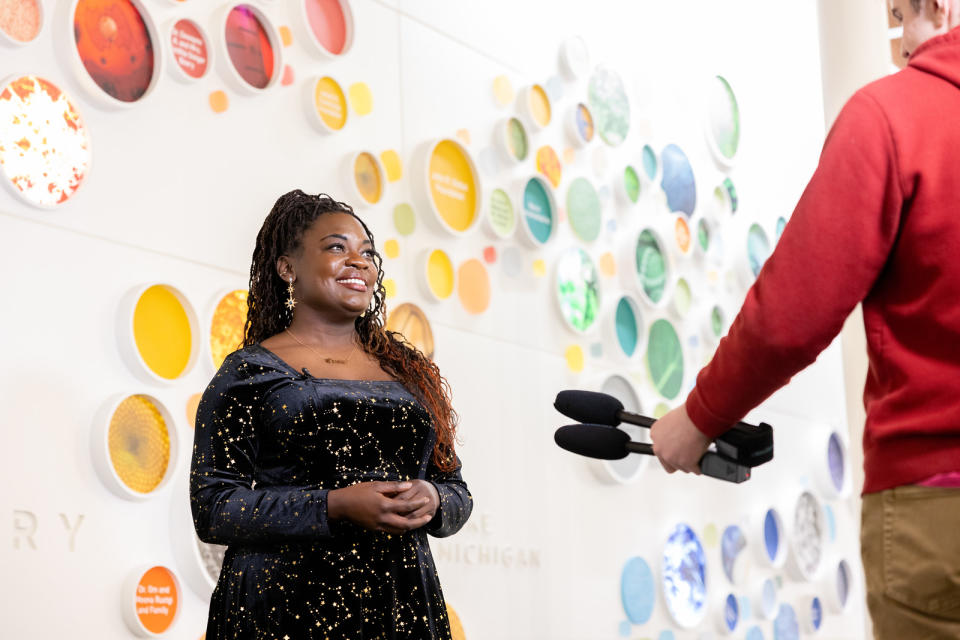An illuminating new program has stargazers and science educators aglow with inspiration.
That program, called Stellar Dreams, is run by the nonprofit organization The Science Haven. It will give away 100 telescopes, with the goal of spurring interest in STEM (science, technology, engineering and math) in underrepresented and underprivileged families.
Founded by molecular biologist Raven Baxter, The Science Haven supports a vision to create an inclusive arena for all shades of science dialogue and impactful connections between disparate communities. Via its expanding platform of events, educational programs, web series, workshops and public discussions, The Science Haven is dedicated to promoting science accessibility and building inclusive environments where perspectives, ideas and opinions can be voiced.
Stellar Dreams is the nonprofit’s latest focus, a curiosity-inciting project that provides 100 beginner-friendly Celestron telescopes to 100 disadvantaged grade 5-12 students and their families across America, beginning with a recent rollout in Buffalo, New York. Besides donating telescopes, Stellar Dreams also offers recipients the chance to become members of a junior astronomer training program, teaching them how to use their new astronomical tools and providing information about free citizen science research in the field of astronomy.
Related: Best telescopes 2024: For stargazing galaxies, nebulas and more


Led by executive director Baxter and Gamble, a NASA astrophysicist, Stellar Dreams has caught the world’s attention with its innovative outreach endeavor. The duo were recently chosen for an Astronaut Rock Star Award by Uniphi Good on National Astronaut Day for being pillars of support and pioneering voices in space exploration and STEM/STEAM education. (The “A” in STEAM stands for “art.”)
“The genesis of the Stellar Dreams Program was really a small seed that just grew and grew,” Baxter told Space.com. “To grow from a simple idea last July to being a successful and award-winning project within six to nine months is a huge accomplishment. I’m extremely honored and so grateful for the support that we’ve been able to rally behind Stellar Dreams.
“STEM programs do a good job, but I see a lot of repetition and duplication. As someone who’s participated as a facilitator or participant or an evaluator, I believe that STEM programs deserve more innovation. Today’s children need bigger challenges, better opportunities and innovative people driving them. I thought about my own childhood and what were some of the things I was exposed to that cultivated an interest in STEM and remembered my grandparents’ telescope. They had it in their sunroom, and I’d take the telescope out during the day trying to look at things but couldn’t since their house was forested and I couldn’t look past the trees.
“So I used it inside trying to look at things very closely, and that’s how I got an interest in molecules. When I got a Ph.D in science education, I learned about all the literature that supports telescopes, and that early access to tools and resources really does have a measurable impact on whether or not someone will pursue a STEM career.


Gamble is Stellar Dreams’ director of programs. He came aboard as an active stakeholder, feeling this project was aligned with his own career initiatives.
“Raven is really good at putting up a Bat Signal,” he told Space.com. “She was telling me this idea and I thought it was fantastic. Stellar Dreams was very close to home for me. Being a black astrophysicist myself, I know the numbers. I was one of those kids. Now I can put my expertise to good use. I know they want these types of telescopes and they want to be able to look at these things in the night sky and have access to the local astronomy community.
“I put some of my artistic talents to use and designed them little junior astronomy cards and posters through our sponsors and partnerships, so they have tangible things, and I was able to bring in NASA swag and stickers. They got a big grab bag of stuff along with the telescopes. The Buffalo Astronomical Association helped to give telescope tutorials and ran a planetarium show, and we were able to get kids inducted right into the association as junior members.”
This ambitious project has fulfilled its goal of obtaining 100 telescopes, but they’re still fundraising for programming costs after kicking it off with 25 Buffalo students.
“We’re looking to continue this program in other cities in the D.C area and North Carolina,” Baxter said. “I’m sort of a hometown hero, and it felt really good to give back to the community that invested so much into me. Those kids’ faces were so bright and so happy, and their families were deeply involved in our program as well. I’ve been getting updates from the families, and they’re just grateful for the opportunity. A telescope is sort of a status symbol for them that’s also a luxury. These families are having something special, and I totally resonate with them.”


RELATED STORIES:
— NASA, ESA experts weigh in on diversity and inclusion in space
— Space has a diversity problem — and big institutions like universities can do something about it
— Citizen scientists find remarkable exoplanet, name it after Harry Potter character
Stellar Dreams’ recipients are gifted a solid mid-range Celestron Travel Scope 80 telescope. The scope also offers a phone mount that allows students to take pictures on their smartphones. The comprehensive kit even comes with a startracker app and a small laser starfinder tool.
“For some of these kids, they’ve never touched a telescope before,” Gamble said. “They didn’t know there were lenses and mirrors inside of one. So they got to put their own telescope together and then go outside and use it alongside larger telescopes other people brought in, and ask questions to the subject matter experts like myself about what they’re seeing. It was a full circle moment for me, growing up being one of those kids and now being able to give them a telescope. It was truly amazing. Based on my involvement in the Stellar Dreams initiative, it helped me get a NASA agency medal, one of the tippy-top ones, so I’m forever grateful, too.”
For more information on the Stellar Dreams Project, partnership opportunities, and how to donate to this worthy cause, visit them at their online headquarters.
